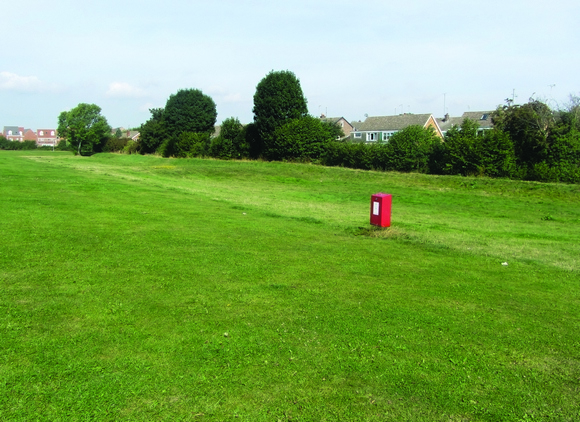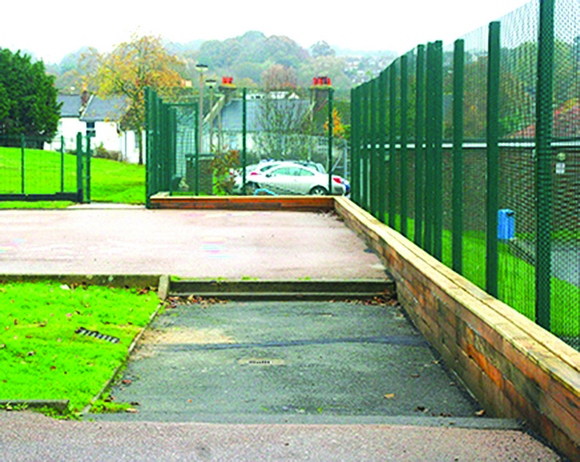- Delivering SuDS
- Using SuDS
- Background
- SuDS principles
- Benefits of SuDS
- Benefits of SuDS
- Why developers should choose SuDS
- Flood risk management
- Water quality management
- Biodiversity & ecology
- Amenity
- Air quality
- Building temperature
- Carbon reduction and sequestration
- Crime
- Economic growth
- Enabling development
- Flexible infrastructure/climate change adaptation
- Education
- Groundwater recharge
- Health and well being
- Pumping wastewater
- Rainwater harvesting
- Recreation
- Tourism
- Traffic calming
- Treating wastewater
- SuDS components
- SuDS components overview
- Source control
- Swales & conveyance channels
- Filtration
- Infiltration
- Retention & detention
- Wetlands
- Inlets, outlets and control structures
- SuDS performance & monitoring
- Delivery
- The costs & benefits of SuDS
- Adoption & maintenance of SuDS
- Legislation & regulation
- Design guidance
- Retrofitting SuDS
- Drainage exceedance
- Home
- Delivering SuDS
- Drainage exceedance
- Stakeholders
- Floods in urban areas
Floods in urban areas
Responsibility for drainage and surface water flooding is one of the more challenging aspects of managing the effects of extreme events in our towns and cities. The general public do not understand (and do not wish to, or need to understand) the technicalities of current legislation.
In Britain legislation has helped provide some clarity in roles and responsibilities for flooding. When flooding occurs it is usually difficult to be precise about the return period of the event, whether or not flood water has originated from land outside of a curtilage or from the highway, or if local watercourse flooding has contributed.
The delivery of timely and robust solutions to urban flooding requires the effective cooperation of the various stakeholders. For further information guidance has been produced on developing surface water management plans (primarily related to England and Wales).
When exceedance occurs, it follows surface pathways and ponds in low spots. Creating, and sharing space is an important part of managing exceedance. Sharing space so it has more than one function is one of the key principles in designing for exceedance. Multiple functions may include recreation, transport, biodiversity, improving health and well-being, and flood and water management.
Public open space (POS) and highways offer a major opportunity to manage shallow flows typical of exceedance for a short space of time and infrequently. To make the most of opportunities we often need to use a wide range of measures which may be permanent (such as a floodwall) or temporary (such as a demountable barrier or floodgate) to divert, channel or store water.
Using highways
There has been resistance to using highways in the past to manage exceedance. The growing number of successful examples indicates this reluctance to use highways may be changing, which may be as a result of disciplines working together.
Highway drainage is typically designed for rainfall with a 1 in 5 year chance of occurring in any given year so exceedance is always likely to occur at some point (whether by design or default) where the rainfall is intense or significant. So highways by design will convey and store exceedance as a function of their drainage capacity.
In new development, routing flows over the highways is an acceptable practice and a requirement for many local authorities (LAs). There are now numerous examples where design of the highway conveys exceedance.
Using Public Open Space
Open green space and POS provides an opportunity to store water, with little impact on the community using the area, due to the low frequency of the heavy rainfall and exceedance occurring. Multi-functional space provides a good opportunity to manage flood risk more cost effectively. This applies to retrofit and new development. Concerns often cited by the public include accidents such as a risk of drowning, what the clean-up operations will require, and areas that are unusable because they are boggy. However, good design and engagement can help overcome these concerns.
Rotherham Borough Council amended the landscape of the playing fields (figure 1) to store exceedance temporarily through good design with a limit on the water depth for health and safety and practical maintenance reasons (typically no deeper than 600 mm to overcome the perceived fear of risk of drowning).

A recent design at Hollington School in Hastings, East Sussex uses a hard play area to double up as exceedance storage (figure 2).

Read more on:



